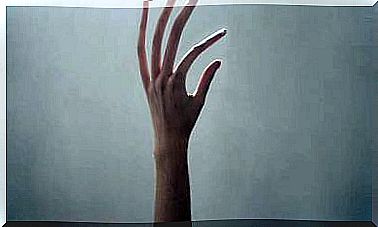Fairbum’s Therapy For Bulimia Nervosa

Fairbum therapy is a psychological intervention specially designed for the treatment of bulimia nervosa. Bulimia nervosa is an eating disorder characterized by frequent bouts of binge eating in which the person loses control.
These binges are followed by compensatory behaviors. These are usually self-induced vomiting or use of laxatives. The latter occur in response to the immense anxiety that the person with bulimia feels when they have binged. Feeling extremely guilty or ashamed, she carries out the purge with the intention of making amends for what happened.
Currently, one of the most effective and therefore most widely used treatments in clinical practice is Fairbum’s cognitive behavioral therapy.
From this approach, the treatment is done in an individual format and the duration is around five months. It is semi-structured, problem-oriented, and focused primarily on the present and the future, rather than the past.
Fairbum therapy consists of three different stages that we will explain in more detail. The priority objectives pursued is that the patient gains control over their diet, that cognitions about weight, silhouette and body image are modified and that the changes are maintained over time.

The Stages of Fairbum Therapy for Bulimia Nervosa
Stage 1
It lasts for approximately 8 weeks and is carried out with weekly interviews, except in cases where there is a great lack of control in the dietary guidelines, in which it would be worth dedicating more than one session.
The first step is to take a personal history of the patient and identify the main points of interest to design the treatment. Later, we go on to explain the cognitive model of bulimia nervosa.
This model gives an account of the vicious circle that occurs in this disorder. There would be a crucial factor that is the idealization of weight and body shape that would lead the patient to make low-calorie diets.
The cognitive factor, that is, basing self-esteem on body image, is considered to be the key to the disorder. The typical cognitive impairment of bulimia nervosa has two main aspects: dissatisfaction with one’s body shape and overvalued ideas about weight and shape. The latter is found in all cases of bulimia.
In this first stage it will also be necessary for the patient to monitor her intake, that is, to record them in a diary. The idea of self-registration is to make the person more aware of their problem as well as to identify the precipitators of the binge.
The records must be carefully analyzed session by session and it is necessary for the patient to connect with what she was doing just before the binge and what thoughts were going through her mind at that moment.
On the other hand, it is convenient that the person begins to weigh himself only once a week. Some patients never weigh themselves as avoidance behavior and others do it 5 or 6 times a week as a method of reassurance.
That is why it would be convenient once and in addition, the weight should be noted in the diary and also the thoughts about the weight should be noted, to later discuss them in session.
Other strategies that are carried out in this initial stage are: information and psychoeducation on eating patterns, compensatory behaviors such as the use of laxatives or diuretics or the adverse effects of diets.
Finally, you are trained to carry out a stimulation control. This is a technique widely used from a behavioral perspective as a means of self-control.
Some of the guidelines that are advised are: do not do any activity while eating, always eat in the same place, leave some food on the plate, limit exposure to “dangerous” foods, and so on.
Stage 2
It is a phase more focused on the cognitive part, so restructuring will be the star technique. The duration is also 8 weeks with a weekly session. Here the priority is elimination from the diet. Since it makes it easier to binge, it is essential that you stop doing it.
In addition, it is recommended to start eating foods that are avoided. These avoided foods are ranked according to the degree of rejection and are classified into 4 groups of increasing difficulty. Every week the therapist tells the patient to eat some of these forbidden foods, starting with the easiest group.
After implementing these techniques, we started with the cognitive therapy itself. As the patient in the first stage already identified negative thoughts, now is the time to teach them the different cognitive distortions that exist and analyze which ones she most identifies with.

In order to identify thoughts and have the opportunity to work on them, the therapist can propose different behavioral experiments or send homework such as looking in the mirror, wearing tight clothes, etc. Based on these tasks, the patient writes down what goes through her mind, brings it to the session and analyzes the veracity, coherence and convenience of thinking like this.
Finally, in this phase it is also convenient to carry out a training in problem solving by which the patient learns that there are certain vital circumstances that do not have a clear solution and that perhaps it is convenient to analyze step by step the alternatives to which we can choose and implement a specific strategy.
Stage 3
It is the last phase of Fairbum therapy, it is carried out in 3 sessions, every two weeks. The goal is to prevent relapse. At the end of treatment, patients feel much better, but most still have some symptoms. In this sense, the patient is trained to differentiate between fall and relapse.
A fall is a small “slip” and is part of the process. We must normalize it and continue. However, a relapse is to return to the starting point. The latter is the one that should be avoided and controlled. It is necessary that in this last stage, the patient has a personal and written strategic plan of what to do if she identifies a relapse.
Currently, Fairbum therapy for bulimia nervosa is one of the most empirically supported treatments. In addition, it is not only used in bulimia, but in its transdiagnostic format it has also shown efficacy with other disorders such as binge eating disorder.









